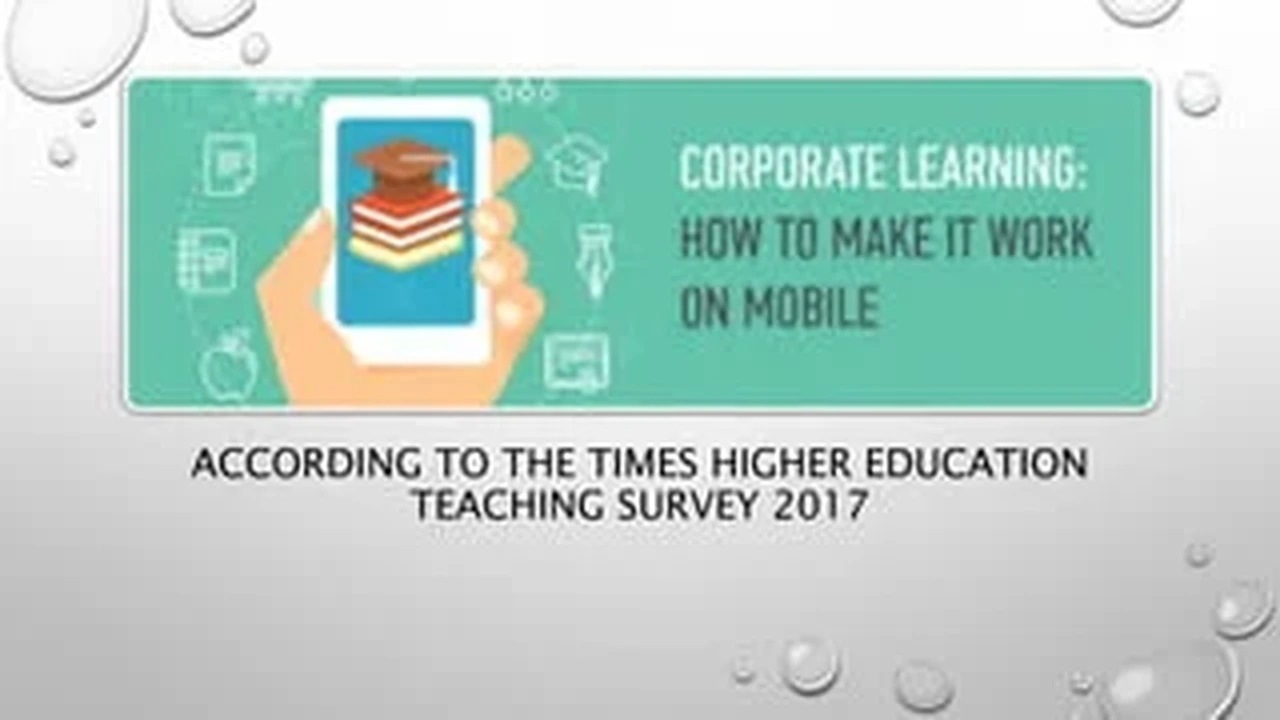Augmented Learning How AR Enhances Traditional Education
Learn about augmented learning and how AR enhances traditional education. Blending digital content with the real world.

Learn about augmented learning and how AR enhances traditional education. Blending digital content with the real world.
Augmented Learning How AR Enhances Traditional Education
Hey everyone! Let's dive into something super cool that's changing how we learn: Augmented Reality (AR) in education. You've probably heard of AR, maybe from games like Pokémon Go or trying on virtual glasses online. But it's way more than just fun and games; it's becoming a game-changer in classrooms and for self-learners everywhere. We're talking about blending digital content with our real world, making learning way more interactive and engaging than just staring at a textbook or a screen.
Traditional education, while foundational, often struggles with making abstract concepts tangible or bringing distant subjects to life. Imagine trying to explain the human circulatory system from a flat diagram, or the intricate workings of an engine just from pictures. It's tough, right? That's where AR swoops in, offering a dynamic, immersive layer that can transform these challenges into exciting learning opportunities. It's not about replacing teachers or books, but about giving them superpowers.
So, what exactly is augmented learning? Simply put, it's using AR technology to overlay digital information – like 3D models, videos, or interactive simulations – onto a real-world view. Think of it as a digital lens that adds extra layers of understanding to what you're already seeing. This isn't virtual reality (VR), which completely immerses you in a digital world. AR keeps you grounded in your physical environment while enhancing it with digital elements. This distinction is key, especially in educational settings where maintaining awareness of your surroundings can be important for safety and collaboration.
The potential for AR to enhance traditional education is massive. It can make learning more engaging, improve comprehension, and even foster critical thinking and problem-solving skills. Let's explore some of the incredible ways AR is already making a difference and how it's set to revolutionize education even further.
Understanding Augmented Reality in Educational Contexts
Before we get too deep, let's clarify what AR means for learning. Unlike VR, which creates an entirely simulated environment, AR takes your existing environment and adds digital elements to it. This means you can still see your classroom, your desk, or your lab, but now there's a 3D heart floating above your textbook, or a virtual historical figure giving a lecture right in front of you. This 'blended reality' approach is incredibly powerful because it grounds the digital content in a familiar, real-world context, making it easier to relate to and understand.
For instance, in a biology class, instead of just looking at a 2D diagram of a cell, students could use an AR app to project a 3D, interactive model of a cell onto their desk. They could then zoom in, rotate it, and even see its organelles functioning in real-time. This kind of interaction moves learning from passive observation to active exploration, which is a huge win for retention and engagement.
The technology behind AR typically involves a device with a camera (like a smartphone, tablet, or AR glasses) that captures the real world. Software then processes this image and overlays digital content onto it, often using markers or spatial recognition to accurately place the virtual objects. This seamless integration is what makes AR so compelling for educational purposes.
Key Benefits of Augmented Learning for Students and Educators
So, why should we be excited about AR in education? The benefits are pretty compelling, both for students and the folks teaching them.
Enhanced Engagement and Motivation in Learning
Let's be real, sometimes learning can be a bit dry. AR changes that. When you can interact with a virtual dinosaur in your classroom or dissect a frog without, well, actually dissecting a frog, learning becomes an adventure. This increased engagement naturally leads to higher motivation. Students are more likely to pay attention, participate, and even seek out more information when the learning experience is exciting and novel. It transforms passive reception of information into active participation.
Improved Comprehension and Retention of Complex Subjects
Abstract concepts are often the hardest to grasp. AR makes them concrete. Imagine learning about complex machinery by seeing a 3D model that you can virtually disassemble and reassemble, or understanding geological formations by walking around a virtual mountain range projected onto the floor. This visual and interactive approach helps students build stronger mental models, leading to deeper understanding and better long-term retention. It's one thing to read about something; it's another to virtually manipulate it.
Practical Skill Development and Experiential Learning Opportunities
This is where AR truly shines for vocational training and hands-on skills. Medical students can practice complex surgeries on virtual patients, engineers can design and test prototypes in a simulated environment, and mechanics can learn to repair engines without needing a physical engine. AR provides a safe, repeatable, and cost-effective way to gain practical experience. Mistakes can be made and learned from without real-world consequences, accelerating the learning curve significantly. This experiential learning bridges the gap between theory and practice.
Personalized Learning Experiences and Adaptive Content Delivery
AR can also contribute to more personalized learning. Imagine an AR app that adapts its content based on a student's progress or learning style. If a student is struggling with a particular concept, the AR experience could offer additional visual aids or interactive exercises. This adaptive approach ensures that each student receives the support they need, moving at their own pace, which is a huge step away from the one-size-fits-all model of traditional classrooms.
Accessibility and Inclusivity in Educational Settings
AR has the potential to make education more accessible. For students with certain learning disabilities, visual and interactive AR experiences can be more effective than text-based learning. It can also bring learning opportunities to remote areas where physical resources might be limited. Imagine a student in a rural village being able to explore the Louvre Museum through an AR experience, or conduct a chemistry experiment without needing a fully equipped lab. This democratizes access to high-quality educational content.
Real-World Applications of AR in Various Educational Fields
AR isn't just a futuristic concept; it's already being used in some pretty amazing ways across different subjects.
Science and STEM Education Enhancing Labs and Experiments
In science, AR can transform labs. Students can conduct virtual experiments that would be too dangerous, expensive, or complex in a real lab. They can explore the human body in 3D, manipulate chemical structures, or even simulate astronomical events. This makes STEM subjects much more engaging and understandable. For example, an AR app could allow students to place a virtual solar system on their classroom floor and walk through it, observing planetary orbits and sizes.
History and Social Studies Bringing the Past to Life
Imagine walking through ancient Rome, seeing historical figures appear in front of you, or exploring a historical battlefield with AR overlays explaining key events. AR can transport students to different times and places, making history feel immediate and relevant. Instead of just reading about the pyramids, students could virtually explore their interiors, seeing how they were constructed and what artifacts they contained.
Language Learning and Cultural Immersion
For language learners, AR can provide immersive experiences. Imagine pointing your phone at an object and seeing its name appear in a foreign language, or having a virtual language tutor appear in your room to practice conversation. This contextual learning can significantly accelerate language acquisition and cultural understanding. AR can also be used to overlay translations of signs or menus in real-time, making travel and cultural immersion more accessible.
Art and Design Fostering Creativity and Visualization
Artists and designers can use AR to visualize their creations in a real-world context before they're even built. Architects can walk through virtual models of buildings on a construction site, and interior designers can place virtual furniture in a room to see how it looks. This allows for iterative design and immediate feedback, boosting creativity and efficiency.
Vocational Training and Technical Skills Development
In vocational fields, AR can provide on-the-job training simulations. Mechanics can get step-by-step instructions overlaid onto an engine, medical professionals can practice procedures, and manufacturing workers can learn to operate complex machinery. This reduces training costs and risks while improving skill proficiency. Imagine an AR overlay guiding a technician through a complex repair, highlighting specific components and providing real-time data.
Top AR Products and Platforms for Educational Use
Alright, let's talk about some actual tools you can use! The AR landscape is growing, and there are some fantastic products and platforms out there, ranging from free apps to more professional, paid solutions. The best choice really depends on your specific needs, budget, and the devices you have available.
1. Google ARCore and Apple ARKit (Developer Tools)
These are the foundational frameworks for building AR experiences on Android and iOS devices, respectively. While not end-user products, they are crucial because most educational AR apps you'll encounter are built using one of these. They provide the core capabilities for motion tracking, environmental understanding, and light estimation, making robust AR possible on millions of smartphones and tablets. Many educational institutions and developers leverage these to create custom learning experiences.
- Use Case: For developers and educators looking to create bespoke AR content for their specific curriculum or research.
- Comparison: ARCore supports a wider range of Android devices, while ARKit is optimized for Apple's ecosystem, often offering slightly smoother performance due to hardware integration. Both are powerful and constantly evolving.
- Pricing: Free for developers to use. The cost comes from the development of the applications themselves.
2. Merge Cube (Physical Object + App)
The Merge Cube is a super cool, tactile way to interact with AR. It's a foam cube that, when viewed through a smartphone or tablet running a compatible app, transforms into various 3D objects. Imagine holding a beating heart in your hand, or a miniature solar system. It's incredibly intuitive and engaging, especially for younger learners or for making abstract concepts tangible.
- Use Case: Elementary and middle school science, history, and art. Great for hands-on exploration of 3D models.
- Comparison: Unique in its physical-digital interaction. Simpler than full AR headsets but highly effective for specific learning objectives.
- Pricing: The Merge Cube itself is quite affordable, usually around $15-$20 USD. Many apps are free, with some premium content available via subscription (e.g., Merge Explorer, Merge EDU).
3. AR Apps for Specific Subjects (e.g., Anatomy 4D, SkyView Lite)
There's a growing library of standalone AR apps designed for specific educational purposes. Apps like 'Anatomy 4D' allow you to project a human body onto a surface and explore its systems. 'SkyView Lite' lets you point your phone at the night sky and identify constellations and planets. These apps are often user-friendly and provide immediate educational value.
- Use Case: Supplemental learning for various subjects, from biology and astronomy to history and geography.
- Comparison: Highly specialized, focusing on one subject area. Generally easy to use for individual learners.
- Pricing: Many are free with in-app purchases, while others are one-time paid apps (typically $2-$10 USD).
4. Microsoft HoloLens 2 (AR Headset)
Moving into the more advanced (and pricier) realm, the Microsoft HoloLens 2 is a self-contained AR headset that projects holograms directly into your field of view. This allows for truly hands-free, immersive AR experiences. It's particularly powerful for vocational training, medical education, and complex engineering tasks where users need to interact with digital models while still seeing and using their hands in the real world.
- Use Case: Advanced vocational training, medical simulations, engineering design, remote assistance for technical tasks.
- Comparison: Offers a much more immersive and hands-free experience than phone/tablet AR. Requires specialized content development.
- Pricing: Starts around $3,500 USD. This is a professional-grade device, not typically for individual students.
5. Magic Leap 2 (AR Headset)
Similar to the HoloLens, the Magic Leap 2 is another high-end AR headset designed for enterprise and professional use. It boasts a wide field of view and advanced optics, making it suitable for detailed visualization and interaction with complex digital models. It's often used in healthcare, manufacturing, and defense for training and operational support.
- Use Case: High-fidelity training simulations, collaborative design reviews, remote expert guidance in technical fields.
- Comparison: Competes directly with HoloLens 2, often preferred for its display quality and comfort by some users.
- Pricing: Starts around $3,299 USD. Also a professional-grade device.
6. zSpace (Desktop AR/VR System)
zSpace offers a unique desktop AR/VR experience, often found in schools and universities. It combines a specialized display, tracking glasses, and a stylus to allow users to interact with 3D content that appears to float above the screen. It's particularly strong for STEM education, offering interactive simulations for anatomy, physics, and engineering.
- Use Case: K-12 and higher education STEM labs, providing a dedicated, interactive 3D learning station.
- Comparison: A hybrid system that offers a more controlled and precise AR experience than mobile devices, but less mobile than headsets.
- Pricing: Systems typically range from $4,000-$6,000 USD per station, including hardware and software licenses.
7. CoSpaces Edu (Content Creation Platform)
CoSpaces Edu isn't an AR device itself, but a fantastic platform that allows students and educators to create their own AR (and VR) content. It's block-based coding makes it accessible even for beginners, enabling users to design interactive 3D scenes that can then be viewed in AR on a phone or tablet. This empowers students to move from consumers to creators of AR experiences.
- Use Case: Fostering digital literacy, coding skills, and creative expression through AR/VR content creation in K-12 and higher education.
- Comparison: Focuses on content creation rather than consumption. Highly accessible for beginners.
- Pricing: Offers a free basic version. Paid plans for schools and educators start from around $150 USD per year for a classroom license.
When choosing an AR solution, consider your target audience, the specific learning objectives, your budget, and the existing technology infrastructure. For most K-12 and general higher education applications, mobile AR apps and platforms like Merge Cube or CoSpaces Edu offer a great balance of accessibility and impact. For specialized vocational training or research, higher-end headsets like HoloLens or Magic Leap might be more appropriate.
Challenges and Considerations for Implementing AR in Education
While AR sounds like a dream come true for education, it's not without its hurdles. We need to be realistic about the challenges before widespread adoption.
Cost of Hardware and Software Development
High-end AR headsets are still pretty expensive, putting them out of reach for many schools and individual learners. Even developing custom AR apps can be costly and require specialized skills. While smartphone AR is more accessible, schools still need to ensure students have access to compatible devices. This digital divide is a significant barrier.
Technical Infrastructure and Connectivity Requirements
AR experiences, especially those with complex 3D models, can be data-intensive. Schools need robust Wi-Fi networks and sufficient device storage to handle these applications. In areas with limited internet access, AR's potential can be severely hampered.
Teacher Training and Pedagogical Integration
Simply handing teachers an AR app isn't enough. Educators need training on how to effectively integrate AR into their curriculum, manage AR-enabled classrooms, and troubleshoot technical issues. The pedagogical approach needs to shift from traditional teaching to facilitating interactive, exploratory learning.
Content Creation and Quality Control
High-quality, educationally sound AR content is crucial. Creating accurate, engaging, and curriculum-aligned AR experiences requires expertise in both subject matter and AR development. There's a need for more robust platforms and tools that allow educators to create their own content without extensive coding knowledge, or for a wider range of vetted, high-quality third-party content.
Potential for Distraction and Over-Reliance on Technology
Like any technology, AR can be a distraction if not used thoughtfully. The novelty factor might wear off, or students might get sidetracked by the digital elements rather than focusing on the learning objectives. It's important to remember that AR is a tool to enhance learning, not a replacement for fundamental teaching principles or critical thinking.
Equity and Access Issues
If AR becomes a standard part of education, we need to ensure equitable access for all students. Schools in underserved communities might struggle to afford the technology, potentially widening the educational gap. Solutions need to be scalable and affordable to truly benefit everyone.
The Future Outlook for Augmented Learning in Education
Despite the challenges, the future of AR in education looks incredibly bright. As the technology matures and becomes more affordable, its integration into learning environments will only deepen.
Continued Advancements in AR Hardware and Software
We can expect AR glasses to become lighter, more comfortable, and more powerful, eventually replacing the need for phones or tablets for many AR experiences. Software will become more intuitive, allowing for easier content creation and more seamless integration with existing learning management systems. Imagine smart glasses that can translate text in real-time or overlay historical information as you walk through a city.
Greater Personalization and Adaptive Learning Experiences
As AI and AR converge, we'll see even more personalized learning paths. AR systems could adapt content in real-time based on a student's emotional state, cognitive load, or specific learning challenges, offering truly individualized support. This could lead to highly efficient and effective learning for every student.
Expansion into New Subject Areas and Training Domains
While STEM and vocational training are early adopters, AR will likely expand into humanities, arts, and even soft skills training. Imagine practicing public speaking with a virtual audience or engaging in complex ethical dilemmas through AR simulations. The possibilities are vast.
Increased Collaboration and Remote Learning Opportunities
AR can facilitate collaborative learning, allowing students in different locations to interact with the same virtual objects in a shared AR space. This is particularly powerful for remote learning, making online education more interactive and less isolating. Imagine a group of students from different countries collaboratively dissecting a virtual frog or designing a virtual building together.
Integration with Other Emerging Technologies
AR won't exist in a vacuum. It will increasingly integrate with other technologies like AI, VR, and the Internet of Things (IoT) to create even richer and more intelligent learning environments. This convergence will unlock new pedagogical approaches that we can only begin to imagine today.
Ultimately, augmented learning isn't just a fad; it's a powerful evolution in how we acquire knowledge and skills. By making learning more interactive, immersive, and personalized, AR has the potential to unlock new levels of engagement and understanding for learners of all ages and backgrounds. It's an exciting time to be involved in education, and AR is definitely one of the technologies leading the charge into a more dynamic and effective future of learning.
:max_bytes(150000):strip_icc()/277019-baked-pork-chops-with-cream-of-mushroom-soup-DDMFS-beauty-4x3-BG-7505-5762b731cf30447d9cbbbbbf387beafa.jpg)






